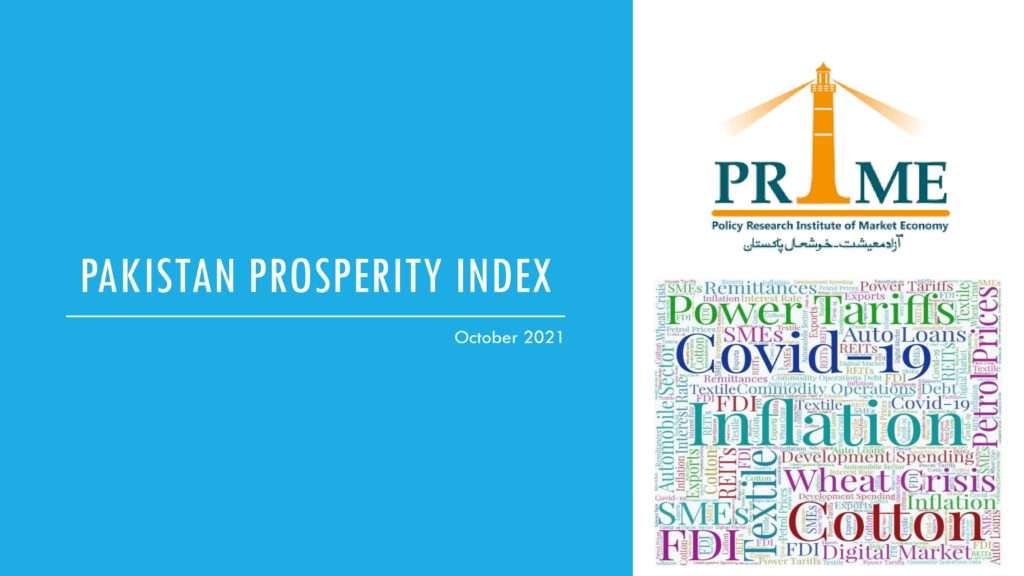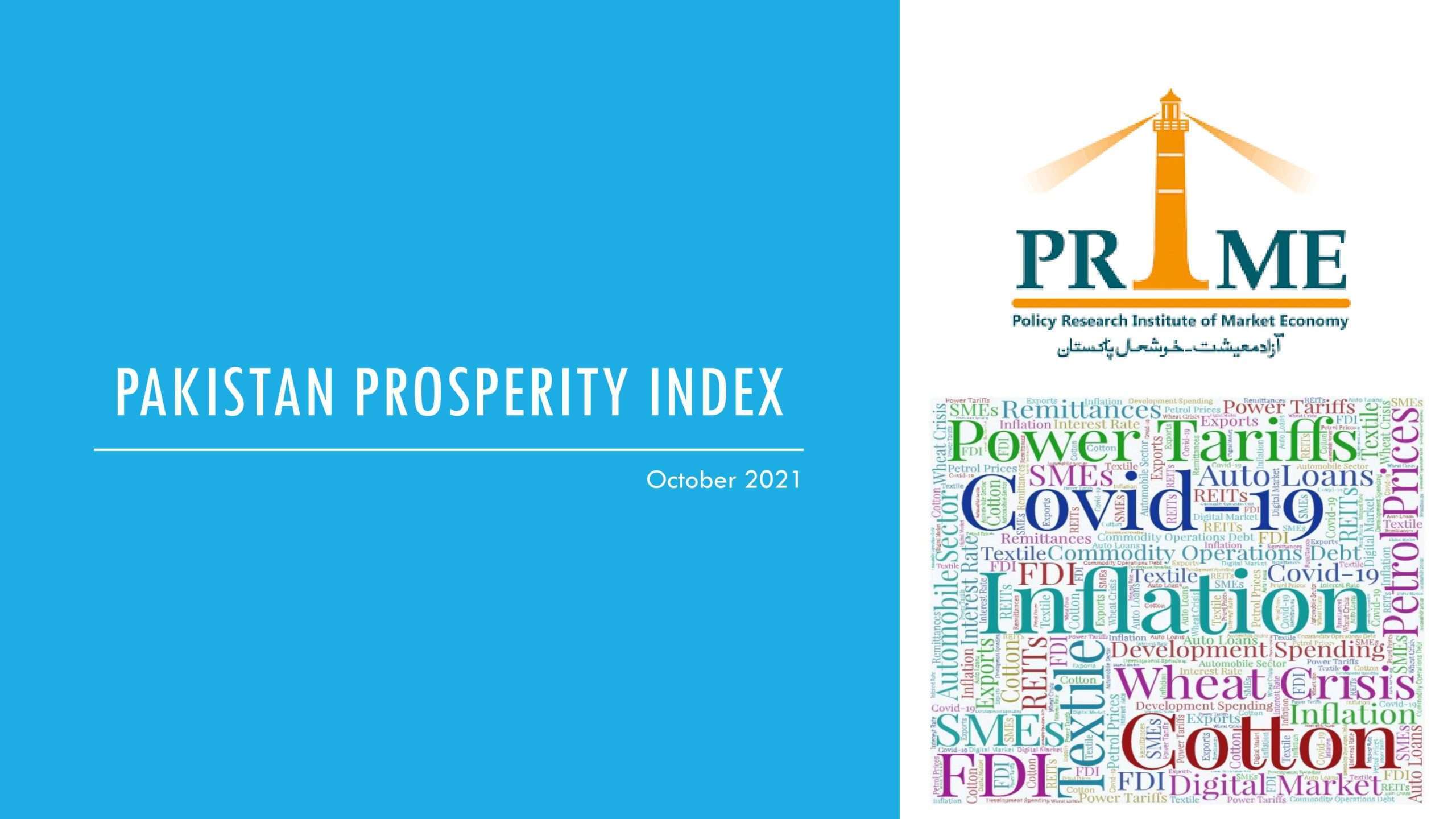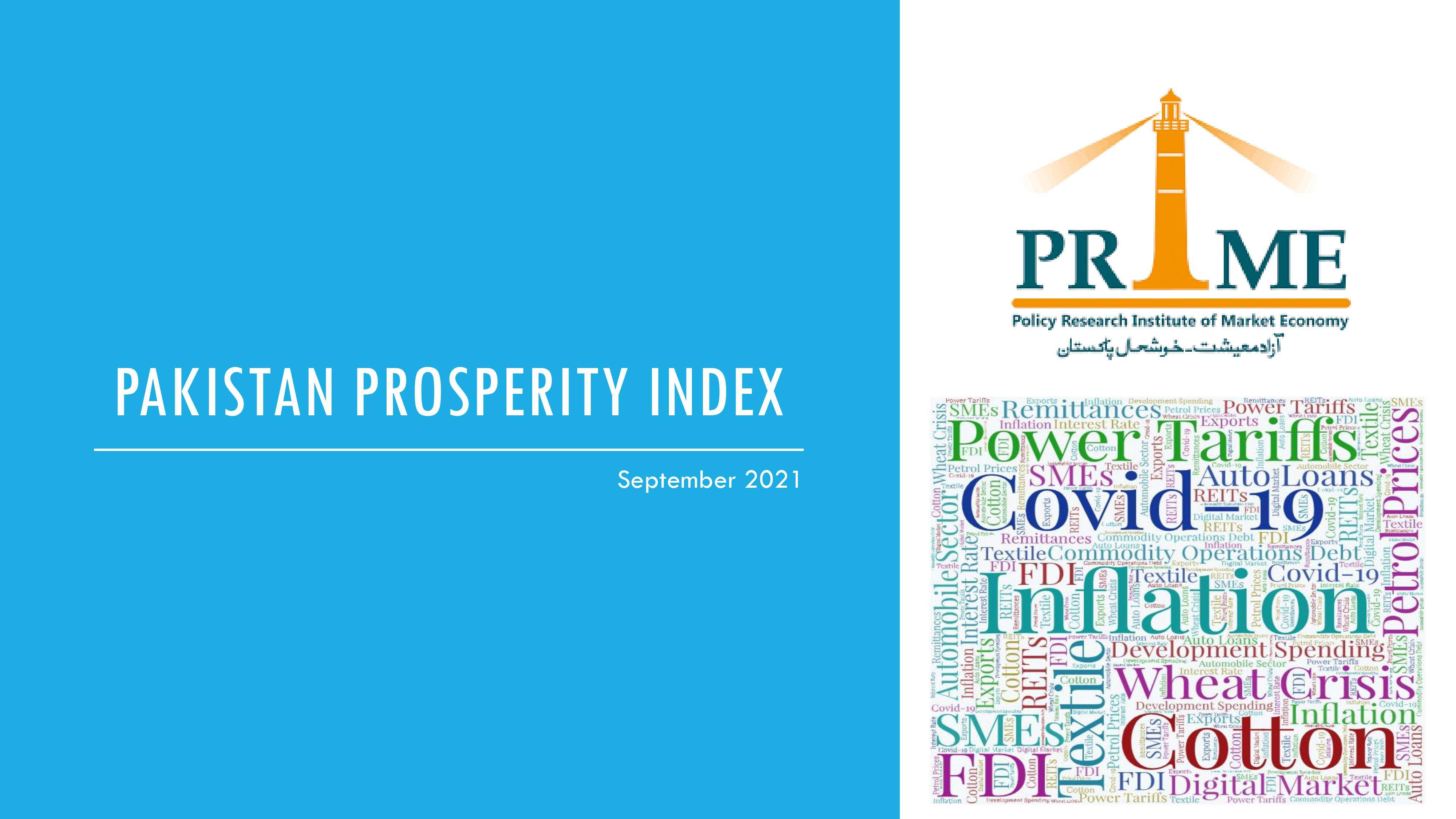Pakistan Prosperity Index – October 2021
Economic prosperity improves amid soaring challenges

Over September 2020-August 2021, economic prosperity has improved by 7.2%, according to PRIME’s latest report Pakistan Prosperity Index. The improvement in overall country’s economic performance can be attributed to opening up of businesses locally and trade internationally after mass vaccination drive, growth in manufacturing activities especially in auto industry from surge in the demand of vehicles and improvement in the employment of labor force.
The trade volume witnessed an increase of Rs.629 billion Y-o-Y and Rs.183 billion M-o-M on account of depreciation of local currency and rise in international demand.
Purchasing power declined as the Y-o-Y Inflation was reported at 8.4%, while the M-o-M inflation clocked at 0.6%, an illustration of decline in purchasing power. The prevalent high levels of inflation are at the back of hike in global commodity and petroleum prices and weak domestic currency.
Large Scale Manufacturing (LSM) increased by 2.09% M-o-M. This increase can be attributed to significant growth in automobile, mineral products and food related industries, insignificant increase in 9 industries and negative growth in 3 industries i.e. fertilizer, rubber and electronics industries.
The private sector borrowing from banks has been on an upward trajectory with Rs.180 billion Y-o-Y and Rs.18 billion M-o-M increase. This increasing trend can be credited to lower cost of borrowing and a reduction in the government’s borrowing needs from the commercial banks thus reducing the crowding out effect.
The economic performance is encouraging but caution is needed due to prevalent challenges. Higher foreign currency demand and subsequent depreciation of rupee is making necessary imports expensive, which translates into higher cost of businesses and prevents manufacturing sector from operating at maximum potential. The surging global energy prices translates into domestic inflation thus declines the purchasing power/real incomes of citizens and hinders the economic activity. Instead of distorting markets through price controls and trade barriers, addressing the supply side shocks of basic food items i.e. lower productivity and output is imperative to lower food inflation, which is the main cause of rising overall inflation in the economy.
The overall economic outlook, as measured by PPI, shows improvement and supports the government’s growth agenda. The supply side shocks call for more liberal trade measures and elimination of state intervention in the market. Moreover, prudent economic planning is needed to curtail fiscal deficit when revenue collection will be low from envisaged petroleum products.
PRIME Institute publishes monthly PPI report with a lag of two months due to availability of data, which comprises trade volume, lending to private sector, purchasing power and manufacturing output indices.
Click Below to read the full report & methodology:
For inquiries, please contact afzal@primeinstitute.org or call at 03330588885.


